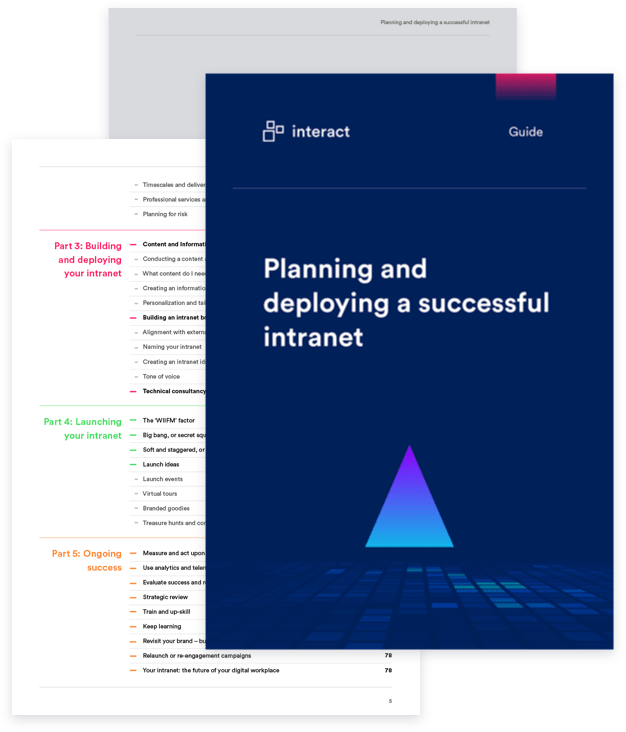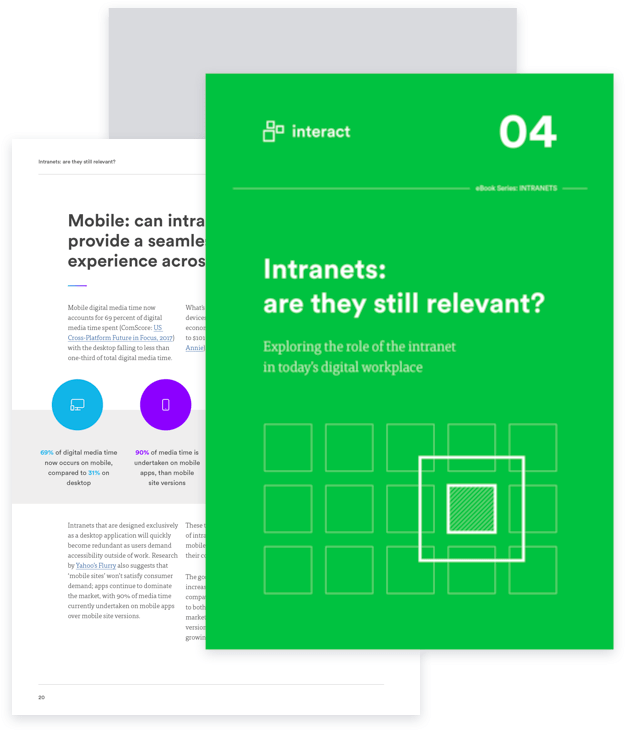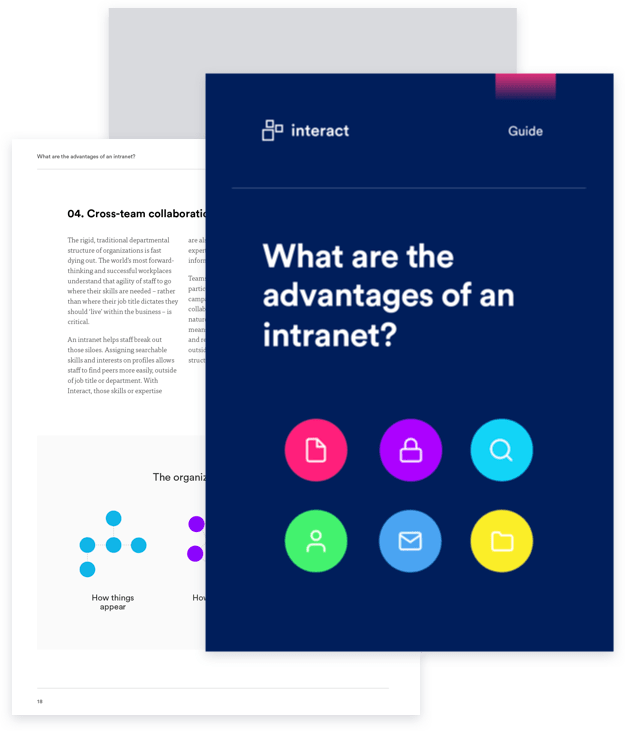The 4 most common pitfalls of an intranet project (and how to avoid them)

A well-thought-out intranet can transform the way your company does business. Planning and launch is an extensive process with both successes and unexpected challenges involved. While preparing and hoping for the best is a must, you need to be ready for any negative surprises.
Building the perfect intranet is like embarking on a journey. Twists and turns accompany you on the way to success. And like any grand adventure, you are bound to come across some significant obstacles. While not as dangerous as slaying dragons or fighting pirates, the wrong issues can be equally as damaging to your intranet’s health.
But what makes a foolproof intranet planning and deployment? The process of building an intranet can be broken down into these simple steps:
- Building a business case for your intranet
- Determining the specific needs of your organization
- Determining your intranet goals
- Establishing an intranet project team
- Designing and crafting content
- Launching our Intranet
However, even you can’t plan for everything. At any of these steps, you can hit a hurdle, falling victim to pitfalls that have afflicted other businesses. Whether starting a new project or relaunching an old one, an efficient intranet that engages users and increases productivity is a goal that escapes many. Educating yourself on the types of issues you may be facing is the best way to sidestep them. Here are X of the most common pitfalls of an intranet project, and how to avoid them.
Download the essential intranet guide today
There was no initial strategy created
So you’ve set out to build an intranet, but do you know exactly what you need? A significant part of the process is determining why you even need an intranet. This means defining not only what your stakeholders will get out of it, but also how it will affect your employees and organization as a whole.
Without a clearly defined plan, you are basically operating with a blindfold on. Unfortunately, working in the dark will only bring you farther away from your goal. How can you measure ROI with no benchmarks or expectations?
Intranets: are they still relevant?
There a large number of questions that you need answers to before you even begin to build out your intranet. Getting started without a set plan guarantees you run into a setback further down the line.
Solution
Ask the right questions. Do your stakeholders have any defined goals? Perhaps they are aiming for a substantial investment in employee engagement. Maybe the site will serve as an easy to use network that can integrate other necessary applications. Whatever the reason, a clearly defined plan of action must be in place before beginning.

Consider surveying your staff or conducting an audit. This way, management can receive a first-hand account of what employees need and what they think the company can improve on. An audit will provide quantitative and qualitative data on what processes and content are well-received and what needs to be reevaluated or refurbished. It is essential when planning your intranet project to be realistic about the resources and time it will take to eventually reach the end goal. Only then can you build a solid foundation for success.
Too many cooks in the kitchen
The phrase,” too many hands in one pot” can apply to more than just the kitchen. For a chef at work, too many dissenting options and suggestions can take a well-prepared recipe and completely turn it upside down. While adding a hint of salt here or a splash of wine there can potentially take the dish to the next level, too many additions are bound to ruin it, especially when communication is lacking.
The same goes for your intranet project. Building out the site is a team effort, usually consisting of groups like IT, executives, HR, or an intranet committee. While all opinions matter in the grand scheme of things, stakeholders may not always realize when their ideas are doing more harm than good.
Solution
The first step is to determine who will make the final decisions. Do you hold open conferences for all your stakeholders? Do you leave the assessments and verdicts to a specific committee? Knowing who will give the final sign off makes it easier to conflicts before they even between.
Introduce your intranet in stages. Leave different groups in charge of specific duties and then bringing the finished product together for revision before final stages take off. This leaves room for everyone to have input in the initial design stages while still giving different stakeholders visibility while changes can still be made. Once the design is decided, the key is to stick to it.
Your UX is not made a priority
Traditionally, an intranet is about pushing out corporate objectives to staff. With greater focus being placed on employee satisfaction and experience, one of the biggest mistakes companies make is ignoring their UX.
If you’re creating your intranet to gain higher engagement, why would you ignore the people who will be using it? If you don’t create something that is user-friendly, delivering searchability, easy to use widgets, and the content employees need, they won’t use it.
Solution
If you don’t know what your employees want, then ask them. Introduce surveys into your intranet planning process. Including your employees from start to finish will ensure that you provide the features necessary to be productive.

Find out what type of content and information they are asking for ad incorporate their requests into your intranet strategy. Use pulse surveys to stay up to date on employee satisfaction. This ensures that the end result remains quick, easy, and user-friendly.
Who owns your intranet project?
You’ve managed to build out, design, and launch your intranet. It’s now finally available to all your staff—but who is managing it? A well-designed intranet can be easily governed, but without ownership, no one will take responsibility for your intranet’s success or failure.
Keeping your intranet relevant and up to date means having updated files, procedures, and important information available for download. The absence of these things will guarantee a lower percentage of engagement from employees.
An unmanaged intranet does not allow proper content migration, functional documentation, or relevant searchability. Unattended, your intranet will leave behind more of a mess than the one it was trying to clean up.
Solution
Clearly define ownership and expectations during the planning process. Site administrators, content authors, everyone should have and understand their role. Breaking up responsibilities into teams can ensure that guidelines stay updated for both current employees and onboarding staff members.

Make sure you arrange for proper training for your content authors and intranet managers. You want to be sure that they are able to do things like create pages, utilize widgets, update the directory, and more.
An intranet is, undeniably, a significant investment. Is it worth it?
Great intranet software encourages companies to create a tailored solution that meets the needs and wants of staff. Getting it right can change not only the ways users interact with each other but also positively impacts a business’s bottom line. With these four tips, companies can seize all the benefits intranets have to offer while dodging the costly pitfalls that accompany implementation and launch.



